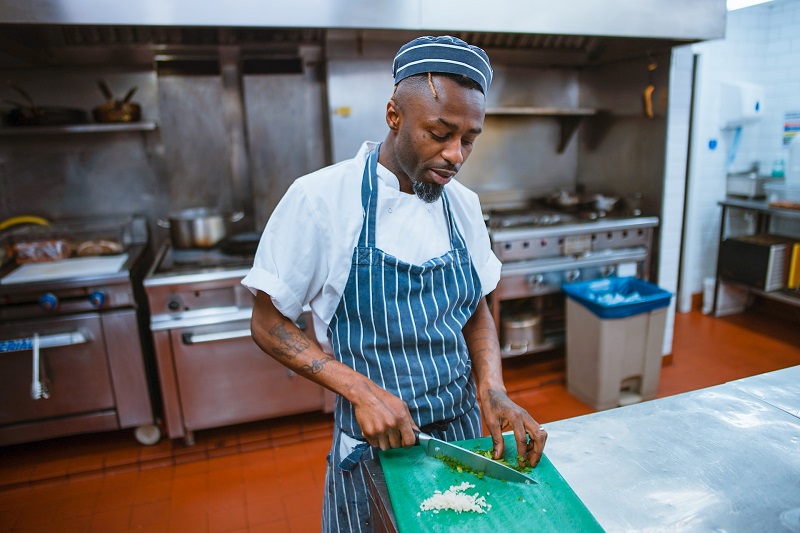Everything To Know About Chef Aprons
There are many different types of aprons. If you appreciate having a fully-stocked kitchen – with the necessary knives, pots and pans, and specialty tools – you’ll also want to have an apron on hand.
Think of it this way: aprons are to kitchenware what the sidekick is to the superhero. Did you get the comparison? The accessibility of life in the kitchen is greatly increased by chef aprons.
Aprons have numerous advantages and are highly useful. Yet, in all seriousness, having an apron in the kitchen sends the appropriate signals. It makes the kitchen appear more trustworthy. It may even raise the bar for the meal. but no pressure.
What Exactly Is A Chef Aprons?

A chef’s apron is a standard-style apron. It’s essentially what we think of when we hear “apron.” Chef aprons, commonly known as “bib aprons,” are the most popular style.
Engineered aprons are made for chefs, providing full-body coverage to protect against hot fires and other dramatics in a busy kitchen. Its style extends from the neck to the knees, has two front pockets on either side and ties behind the neck and around the waist. Oh, and the length is between the knee and the upper ankle.
Spills, splashes, flames, and fire: Chef aprons will keep you safe. While professional chef aprons are frequently made of a heavyweight and very tough material, a Linen Apron in the chef apron design style will be ideal for the non-chefs of the globe.
Every kitchen’s favorite assistant and sidekick is a linen apron. A lightweight yet sturdy 100% cotton mix cloth is comfortable while strong enough to withstand years of drying and washing. A Linen Chef Apron has clever design elements like an adjustable neck strap, roomy front pockets, and a hanging loop for simple storage that make the kitchen more approachable and enjoyable.
Additional Apron Designs
Aprons, like knives, spatulas, pots, and pans, have many applications. There are more than you think, and here’s the lowdown on a few of them.
- Apron Waist/Half Apron
Waist aprons, sometimes known as half aprons or server aprons, are shorter and do not cover the upper body.
Waist aprons (server aprons) are made for servers in the same way that chef aprons are. Moving between tables is made simpler by the shorter length, while pockets on both sides store money, pens, straws, and silverware.
Servers, front-of-house employees, bussers, waiters, and waitresses benefit from waist aprons. Are they a decent option for a home kitchen? A waist apron could be a good option if you’re concerned about feeling constrained or overheated while cooking.
- Apron with Four Ways

Returning to a heavier-duty apron, we have the 4-way apron. This apron type features four layers, allowing it to be folded and refolded multiple times, resulting in many clean surfaces.
When preparing a whole meal with the freedom to create many new spots to wipe your hands, there is no need to relocate salad dressing to the main dish or gravy to the dessert course. This apron is best suited for busy environments like back-of-house kitchen employees.
- Bistro Apron :Bistro aprons cover the waist just above the feet, with no upper body coverage. Bistro aprons are designed for front-of-house employees, and their lengthy length protects the entire leg and jeans when performing messy jobs like wiping down tables and emptying dishes.
- Apron for Cobbler :Cobbler chef aprons cover the upper torso at the front and rear. They have side ties that allow them to be pulled tighter or kept looser and one large pocket at the front of the waist. Cobbler aprons are popular in the hospitality business and suitable for use in bakeries, schools, and hospitals.
- Disposable Apron : The final type of apron to discuss is the disposable apron – and don’t discard it too fast! Disposable aprons are, indeed, disposable and are often constructed of water-resistant plastic. This kind’s covering ranges from full-length to waist-apron style.
While disposable chef aprons may appear cheap and unpleasant, they are surprisingly helpful. A disposable apron can save you heaps of paper towels and numerous loads of washing for infrequent jobs like science fair projects, arts and crafts, and house restorations.



